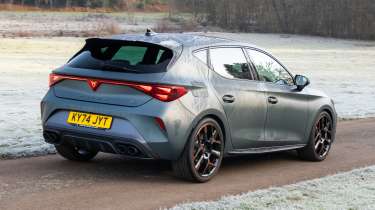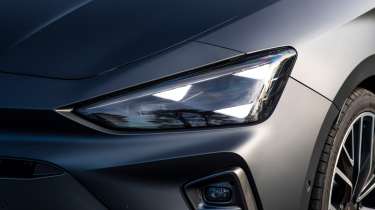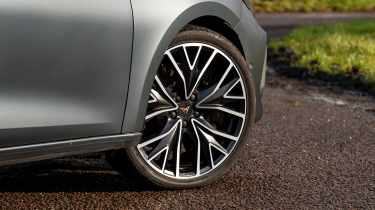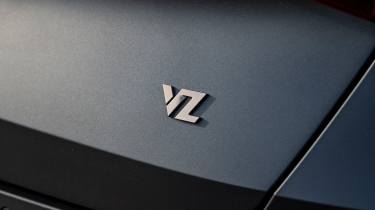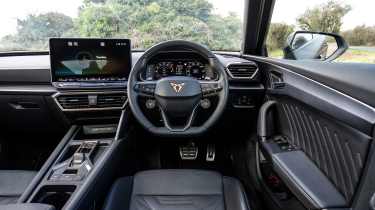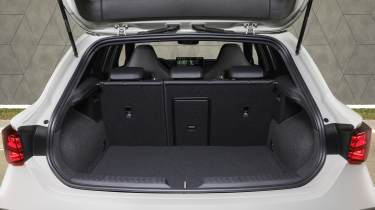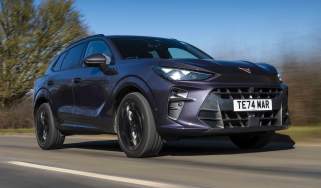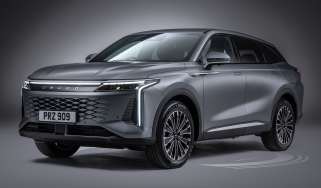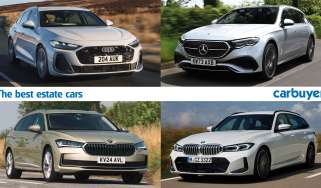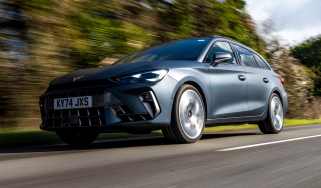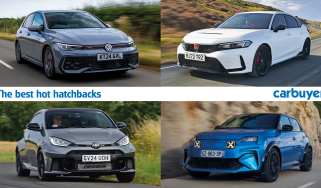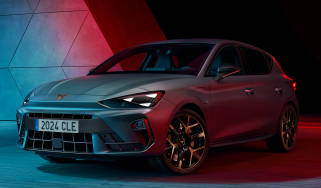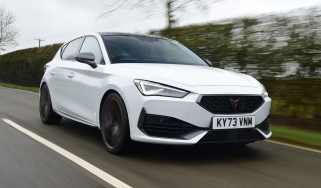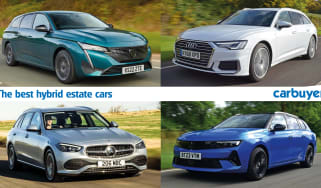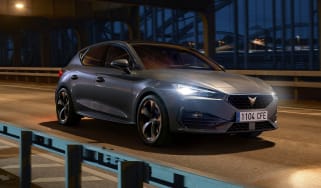Cupra Leon review – a sporty hatchback that’s also a great all-rounder
"The Cupra Leon is a stylish, high-performance take on the standard hatch that's a desirable alternative to mainstream rivals"
Pros
- Great fun to drive
- Value for money
- Arresting styling
Cons
- Thirsty mid-range petrol engine
- Confusing trim levels
- Infotainment system could be better
Verdict – is the Cupra Leon a good car?
The Cupra Leon is a sporty hatchback that offers an interesting alternative to the equivalent hot Volkswagen Golf. The facelifted Cupra Leon now boasts extroverted styling to further set it apart from its SEAT Leon sibling, but it can be just as easy to live with day to day. There’s a wide range of trims and engines, but we actually think the plug-in e-Hybrid suits the Leon’s character well, and feels just as good to drive as the full-fat hot hatch model.
Cupra Leon models, specs and alternatives
Cupra was previously a performance trim level of SEAT’s line-up, but it’s now a brand in its own right and part of the Volkswagen, Skoda, SEAT and Audi family. That said, the Cupra Leon is still closely linked to and based on the SEAT Leon hatchback.
We’ve now test driven the latest updated Cupra Leon on UK roads, and it’s still the interesting left-field alternative to the Volkswagen Golf. The problem is, up against comparable trim levels of the Golf R, the Leon is no longer necessarily the cheaper option, and the Golf R arguably has more kudos. Entry-level Cupra Leon models with the low-powered engine cost almost £2,000 more than the SEAT Leon with the same engine in sporty-looking FR trim, too, so you’d probably be better off going for that version if you don’t want the full hot hatch package.
 The UK's top 10 fastest hot hatchbacks 2025
The UK's top 10 fastest hot hatchbacks 2025
Previously the Cupra Leon’s styling was very similar to that of the SEAT Leon, albeit with some sportier touches such as larger air intakes and copper-coloured trim, but a facelift in 2024 brought a redesign that differentiates it even further. The latest Cupra Leon gets new headlights made up of small triangles and a smoothed-over grille that gives it a look closer to the Cupra Born EV. At the rear, the tail-lights also now feature these triangular elements, and the full-width lightbar incorporates an illuminated Cupra logo.
More reviews
The facelift brought revisions to the interior, which now gets a larger 12.9-inch infotainment screen compared to the 12-inch system from before, and updated software that makes it better to use. Most of the engine lineup is the same, although automatic versions of the entry-level 1.5-litre car now get mild-hybrid assistance, while the top-spec 2.0-litre engine (derived from the Volkswagen Golf GTI Clubsport) sends 296bhp to the front wheels – the Sports Tourer Estate gets up to 329bhp and four-wheel drive. Between these, there's the eHybrid PHEV model which now uses a 1.5-litre combustion engine – compared with the 1.4-litre unit from before – paired with an electric motor for 268bhp.
Company car drivers are catered to with these aforementioned eHybrid models, which have the ability to drive for up to 62 miles without using any petrol, cutting its official CO2 emissions to just 10g/km, for a very low Benefit-in-Kind (BiK) band.
There are six trim levels: V1, V2, V3, VZ1, VZ2 and VZ3 – the VZ models are reserved for the higher-spec engines. In general, standard equipment across the lineup is incredibly strong; even entry-level cars get LED headlights,18-inch alloy wheels, wireless phone charging and a reversing camera.
If you want to buy the Cupra Leon, check out the latest deals on our sister site Auto Express' Find a Car service
MPG, running costs & CO2 emissions
Since the Cupra Leon’s major 2024 revisions, the line up has gained new e-Hybrid models which now use a 1.5-litre engine paired with an electric motor, rather than the 1.4-litre engine from before. The biggest news, however, is that these get a larger battery, so they’re capable of travelling up to 73 miles on a charge, meaning the combustion engine won’t have to chime in so much.
It also means the fuel-economy figures for the Cupra Leon e-Hybrids are very impressive on paper, but be aware these won’t be remotely possible unless you keep your Leon charged up frequently and running on electric power most of the time. The 201bhp version has an official figure of up to 744.4mpg, and the 268bhp version will do 706.2mpg on paper, but an average of just over 50mpg is probably more realistic long-term.
When we tested the 268bhp Leon e-Hybrid, we did achieve an impressive 74.3mpg on a mixed test route with a charged battery, but be aware this will plummet if that charge depletes. With on-paper emissions of just 9g/km, company-car buyers will pay very little Benefit-in-Kind (BiK) tax, so the e-Hybrid might be the best option if this is you.
Getting 296bhp out of a 2.0-litre engine actually requires it to be highly efficient, so if you can resist the temptation to floor the throttle, the Cupra Leon 300 can actually be pretty affordable to run. Its official combined fuel economy figure is 37.2mpg, which stacks up well against the 34.4mpg of the less powerful Ford Focus ST, and isn't far off the 38.2mpg of the Volkswagen Golf GTI.
While similar to rivals, its CO2 emissions from 172g/km are a bit on the high side, putting the Cupra Leon 300 firmly in the highest BiK band for company-car drivers.
The entry-level Leon 150 is not only the cheapest model to buy, it’s pretty economical, too; Cupra claims it’ll return 47.8mpg from its smaller 1.5-litre engine, although with an emissions figure of 135g/km, it won’t make much sense as a company car. Following the facelift, the automatic versions should actually be a little more efficient, thanks to the addition of mild-hybrid tech (badged eTSI).
Be aware that any version of the Cupra Leon costing over £40,000 will incur the luxury car tax surcharge on top of the standard VED (road tax) from the second to sixth year of the car's life. Unfortunately, as it stands, that applies to most of the range – only the 1.5-litre TSI and eTSI models and one 201bhp e-Hybrid model in the lowest V1 trim cost below that, so if low running costs are paramount, keep an eye on that list price.
Insurance groups range from 20-33, depending on the car’s exact specification. Happily, every new Cupra model comes with a competitive five-year/90,000-mile warranty in case anything goes wrong or defective parts need replacing.
Engines, drive & performance
While Cupra is a performance brand, the Leon’s broad engine range means it’s not only offered as a hot hatchback. Most of the engines were carried over as part of the facelift, including the entry-level 1.5 TSI and eTSI engines and the full-fat 2.0-litre four-cylinder turbo. The e-Hybrids are where the biggest change has come, and their 1.4-litre combustion engine has been swapped out with a 1.5-litre unit paired with an electric motor.
The Cupra Leon 300 shares its engine with the Volkswagen Golf GTI Clubsport, and its 2.0-litre is also closely related to the Golf R engine. Its 296bhp can get it from 0-62mph in 5.7 seconds and on to a top speed of 155mph, despite it being front-wheel drive only. It might be augmented by the speakers, but the engine sound inside the Leon 300 isn’t the most tuneful to listen to.
While on paper it does lots right, the Cupra Leon lacks some excitement. We think the 268bhp e-Hybrid strikes a surprisingly good balance, because despite its extra weight over the 2.0-litre model, it handles just as well, and we think it’s slightly more comfortable. While it may not be quite as quick, it was hard to notice much of a difference, and because the electric motor is there too, you get instant shove on tap. While we’re not great fans of how the 2.0-litre engine sounds, the 1.5-litre unit in the e-Hybrid sounds even worse at high revs, although below that it’s smoother and quieter.
The Leon 150 is the starting point in the Leon price range, and if you don’t mind a manual transmission, it starts from over £31,000. The 1.5-litre petrol engine lacks the power and urgency of the 2.0-litre options, managing the 0-62mph run in 9.2 seconds (8.9 seconds with the DSG automatic transmission). It’s worth noting that without the adaptive suspension setup and rorty engine note of the top models, the Leon 150 doesn’t feel quite as sporty, nor does it provide as engaging of a drive as similarly-priced competitors such as the Mazda3 and BMW 1 Series. In addition, you can have the same engine on the SEAT Leon in sporty FR trim for almost £2,000, so that model might be worth considering.
We’ve mentioned how the 268bhp e-Hybrid plug-in hybrid might actually be the best option because as well as being economical, it strikes a great balance with impressive performance, too. There’s a lower-powered version with 201bhp as well, so if you want to tip the scale further towards economy with all the desirability of the Leon’s sporty looks, then you’re catered to here.
Interior & comfort
Cupra is the most youthful brand in the Volkswagen Group stable, and that's reflected inside, where the dashboard's angular surfaces and vents make us wonder if this is what a Lamborghini hatchback would look like. The steering wheel even features two buttons for starting the engine and changing driver modes, like you'll find in many supercars. In every version equipped with shift paddles, a heated steering wheel is also standard.
Bronze highlights may be a bit much for some tastes, but they certainly make the Leon more flamboyant than the Golf. Surprisingly, it's also more intuitive, with a physical button to switch off driver aids instead of a multitude of on-screen menus. The only real negative is the presence of some cheap trim if you look for it. Facelifted cars get a larger 12.9-inch infotainment screen compared to the 12-inch system from before.
The facelift brings a revised trim structure comprising six trims, dubbed V1, V2, V3, VZ1, VZ2 and VZ3. VZ versions are only available with the higher-output engines, so Cupra’s naming strategy splits the range between more pedestrian and hot hatch models.
V1 grade gets 18-inch wheels, LED headlights and tail-lights, while there’s ambient interior lighting for an upmarket feel, digital dials and a 12.9-inch infotainment display with navigation. Tri-zone climate control, wireless smartphone charging and a rear-view camera and front and rear parking sensors are also standard, so it’s well equipped.
Kit such as larger 19-inch wheels, rain-sensing wipers, heated front seats and driver assistance tech like adaptive cruise control and the like are added on higher trims, and there’s too much to list here, but with how well equipped the Cupra Leon is in the first place, we recommend looking carefully at the kit list against the price to decide if what’s offered higher up is worth it if you’re thinking of buying one.
Boot space, practicality & dimensions
The Cupra Leon has no size differences from the SEAT Leon it's based on, so four adults can travel in comfort, while its boot is competitive without being class-leading. The Leon grew for the latest generation, with a 50mm increase in wheelbase (the distance between the front and rear wheels) that provided an improvement in rear knee room. There's plenty of headroom too, although a central transmission tunnel means the middle rear seat isn't as comfortable.
The Cupra Leon 245 and 300 both have a 380-litre boot, that's on a par with the Golf and slightly bigger than the Ford Focus ST's luggage compartment. If you need more space, there's the Honda Civic Type R with its 420-litre boot, or the Skoda Octavia vRS which boasts 600 litres of storage. Choose the eHybrid and the boot shrinks to 270 litres because of the extra hardware necessary for its hybrid powertrain. The Cupra Leon is also available as an estate, increasing its boot capacity to 620 litres.
Reliability & safety
Despite being a new generation, the latest Cupra Leon is a thorough evolution of the previous SEAT Leon Cupra model, so it would be a surprise if its reliability is much different. Owners scored the closely-related SEAT Leon 29th out of the top 75 models in our 2022 Driver Power owner satisfaction survey, although it did not make an appearance in 2023 or 2024.��
The Cupra brand has made its debut in our manufacturer survey, coming in 18th place out of 32 carmakers. While that’s middle-of-the-road from a wider perspective, it’s the highest-scoring brand under Volkswagen Group ahead of Volkswagen (29th), Audi (27th), SEAT (24th) and Skoda (23rd). 23.1% of Cupra owners reported an issue with their car in the first year, which is about average.
Even more impressive is the fact that Cupra offers a five-year/90,000-mile warranty, which is two years more than that offered by the other aforementioned brands under Volkswagen Group. Why this isn’t offered by all of them despite the fact they use the same engines and much of the same switchgear, we don’t know, but it’s certainly worth keeping in mind if you want extra reassurance.
The Leon is also fitted with an abundance of safety kit, helping it land a five-star Euro NCAP safety rating. Following crash tests, it scored an impressive 92% and 88% respectively for adult and child occupant protection. It also has blind-spot monitoring, lane-keeping assist and traffic jam assist as standard, along with adaptive cruise control to take the strain out of driving long distances.


